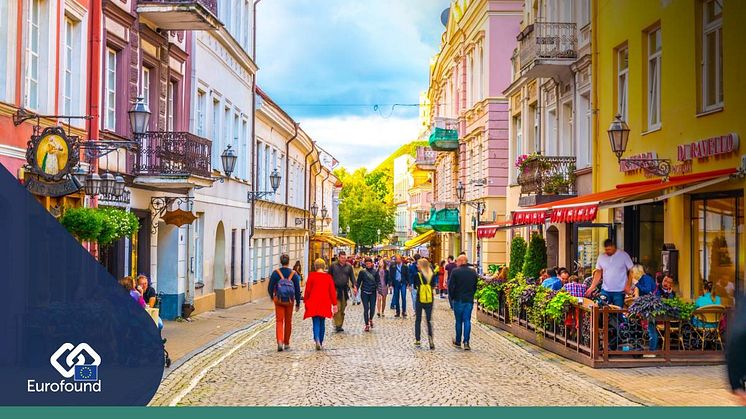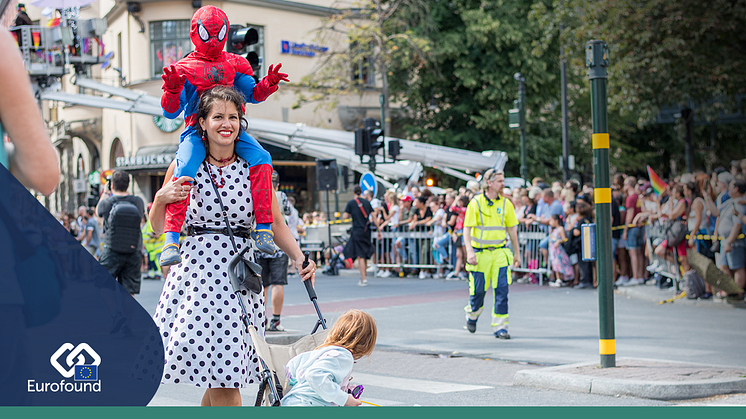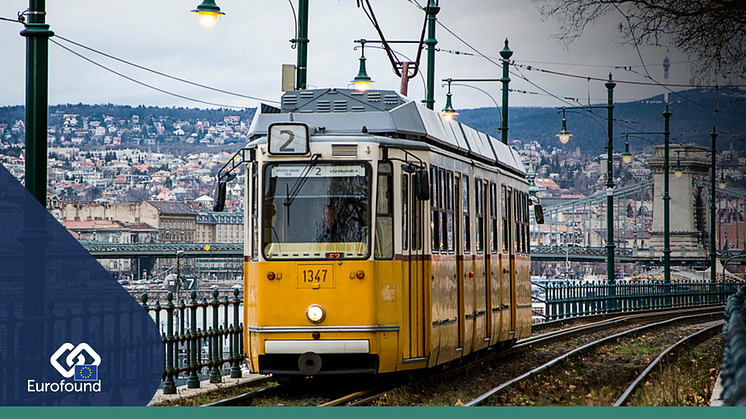
News -
Quality of life improving in Lithuania although signs of inequality remain, particularly for older people, women
The perceived quality of public services and overall living standards in Lithuania have improved over recent years. The share of people reporting difficulty making ends meet has dropped and life satisfaction and happiness levels have increased. However, despite these overall increases to quality of living standards, income inequality has been increasing since the financial crisis, making Lithuania’s income distribution the second most unequal in the EU – with older people, women and those living in rural areas most affected.
Lithuania, once one of a number of EU countries with higher-than-average rates of unemployment and young people not in education, employment or training, has managed to catch up quickly with EU averages, as identified in Eurofound’s research on Upward convergence in employment and socioeconomic factors. The early school leaving rate dropped to be the second lowest across the EU and the number of people aged 30-34 with a tertiary qualification is the highest across the EU.
There has also been marked improvement in perceived quality of life in Lithuania, coming on the back of increased wages and strong economic performance since 2013. According to the European Quality of Life Survey, perceived life satisfaction increased from 5.4 in 2003 to 6.5 in 2016. Similarly, there has been a steady increase in the perceived quality of public services, with rates of perceived quality for health services improving from 5.1 in 2003 to 6.3 in 2016 and the perceived quality of public transport increasing from 6.3 in 2003 to 7.0 in 2016, rising above the EU average. These positive developments over the last 15 years may explain why Lithuania reports the highest level of trust in EU institutions of all EU countries, as shown in Eurofound’s report on trust and social cohesion.
Although there is much to celebrate in terms of overall quality of life improvements, declining levels of social exclusion and increased trust in society, inequality has been growing since the economic crisis. The level of income inequality in Lithuania is now one of the highest in the EU, with the top 20% of the population earning 7.1 times that of bottom 20%. The European Quality of Life Survey data shows that older people in particular are facing challenges with nearly a third of people aged 65 and over struggling to make ends meet and 17% not being able to adequately heat their home.
Looking at labour market and quality of life indicators from a gender perspective, we can see that 23% of women struggle to make ends meet, compared to 14% of men, despite Lithuania having a female labour market participation rate of 53% and the highest share of women in management in the EU. A 15.2% pay gap still exists between women and men however, just below the EU average of 16%, and increasing in recent years. This is thought to be linked to labour market segmentation, wage inequality and the unequal distribution of informal care responsibilities.
Overall, while high levels of inequality remain, there has been significant social and economic progress over the last 15 years in Lithuania, with quality of life improving, wages increasing and educational attainment climbing to among the highest levels in the EU. Consequently, there is a high level of optimism for the future, with 69% feeling optimistic for their children or grandchildren’s future – above the EU average of 54%.
Read more:
Publication: Upward convergence in employment and socioeconomic factors
Publication: Social cohesion and well-being in Europe
Policy brief: Women in management: Underrepresented and overstretched?
Explore the data: European Quality of Life Survey
Country profile: Living and working conditions in Lithuania




